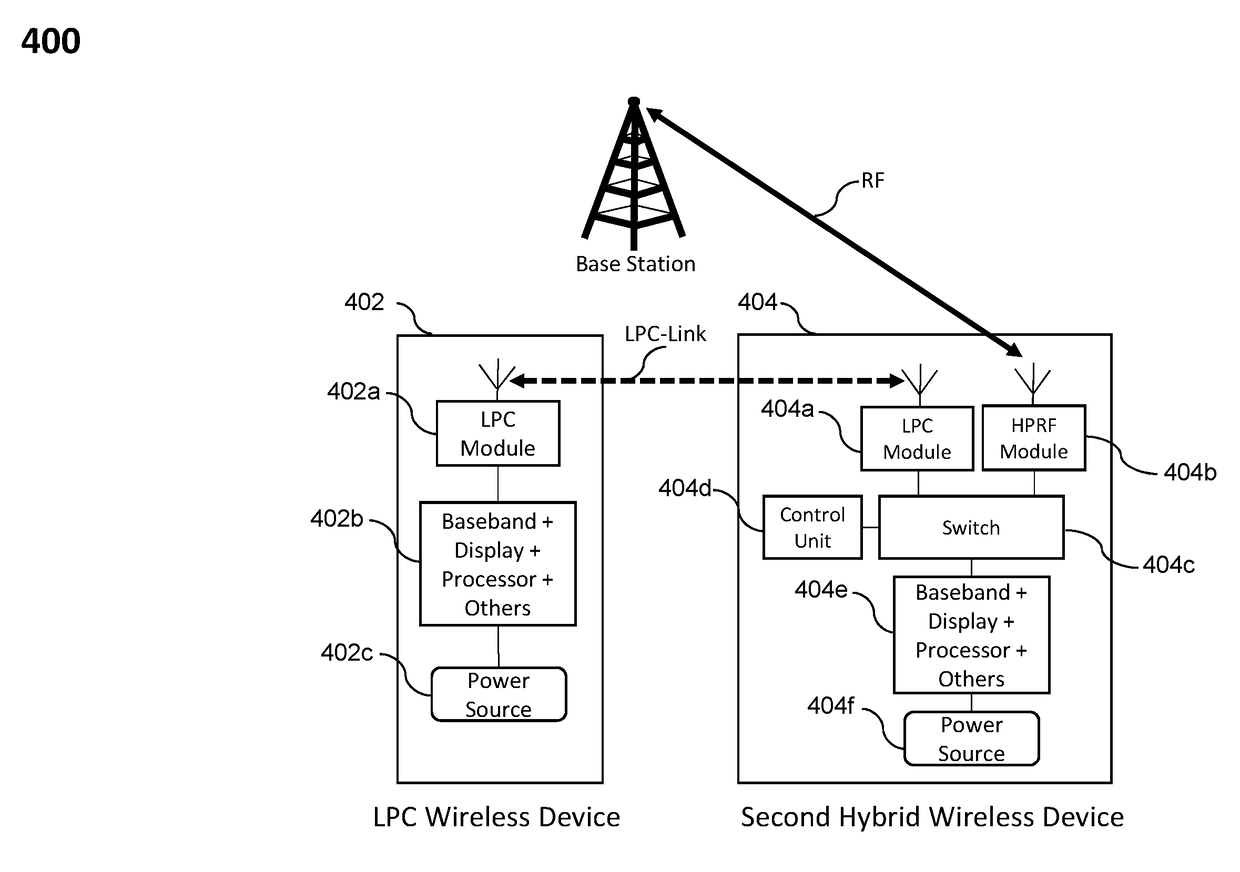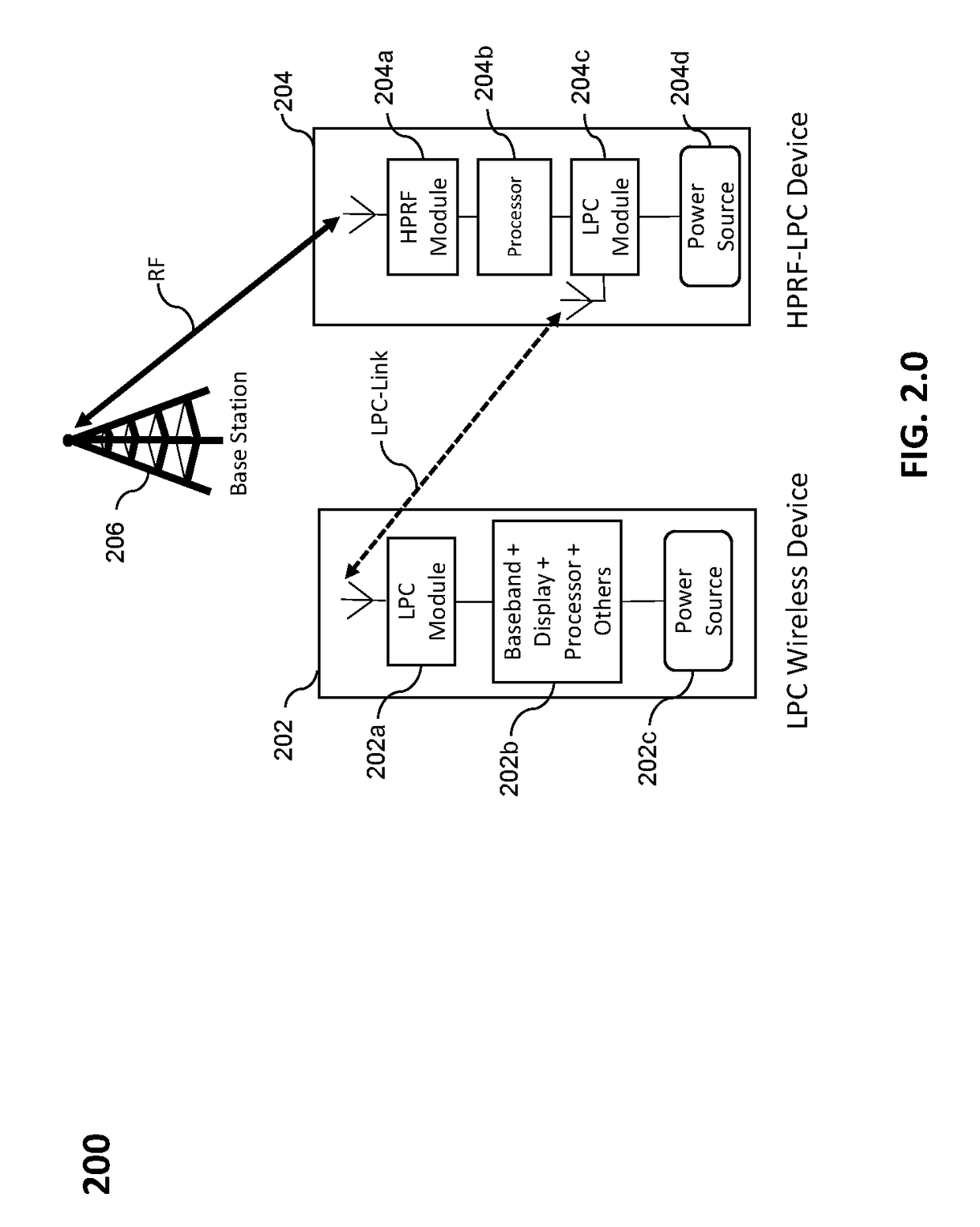System and method for reducing exposure of human to radio frequency radiation
a radio frequency radiation and human exposure technology, applied in power management, high-level techniques, wireless communication, etc., can solve the problems of human safety hazards, stringent requirements, and difficulty in meeting, and achieve the effect of reducing human exposur
- Summary
- Abstract
- Description
- Claims
- Application Information
AI Technical Summary
Benefits of technology
Problems solved by technology
Method used
Image
Examples
Embodiment Construction
[0069]The present invention provides a system and method to reduce exposure of human to radio frequency radiation. In particular, the present invention decouples a wireless communications device (e.g. a cellular device) from its relatively high power radio frequency (HPRF) module by enabling the wireless communications device to communicate with a HPRF-LPC device via a low power communications link (LPC-Link). Hereinafter, this specification will describe the present invention according to the preferred embodiments. It is to be understood that limiting the description to the preferred embodiments of the invention is merely to facilitate discussion of the present invention and it is envisioned without departing from the scope of the appended claims. As provided in the system and method of the present invention, when the HPRF-LPC device or the other low power communications devices as described herein is placed relatively away from the user, RF exposure to human is automatically reduc...
PUM
 Login to View More
Login to View More Abstract
Description
Claims
Application Information
 Login to View More
Login to View More - R&D
- Intellectual Property
- Life Sciences
- Materials
- Tech Scout
- Unparalleled Data Quality
- Higher Quality Content
- 60% Fewer Hallucinations
Browse by: Latest US Patents, China's latest patents, Technical Efficacy Thesaurus, Application Domain, Technology Topic, Popular Technical Reports.
© 2025 PatSnap. All rights reserved.Legal|Privacy policy|Modern Slavery Act Transparency Statement|Sitemap|About US| Contact US: help@patsnap.com



